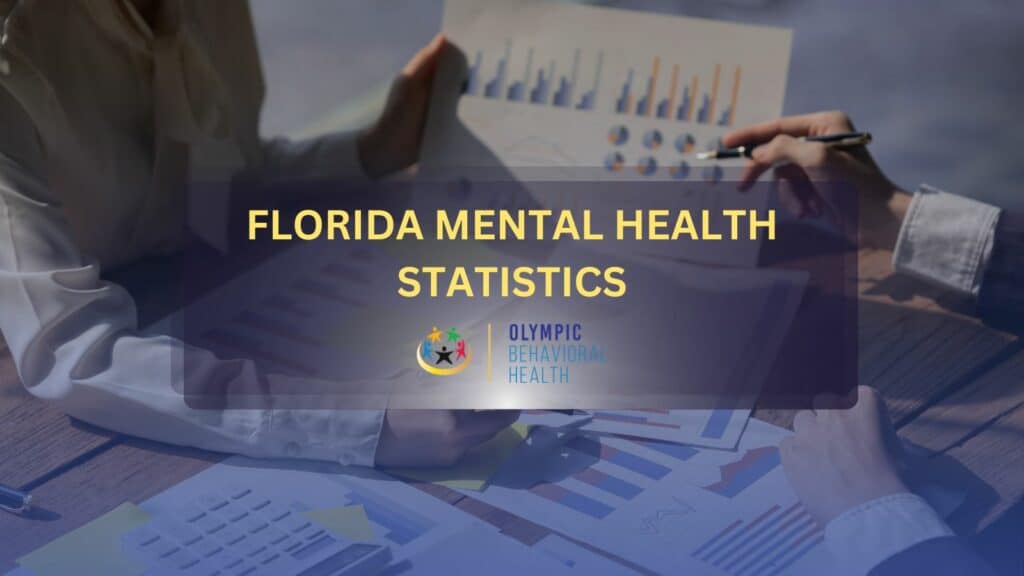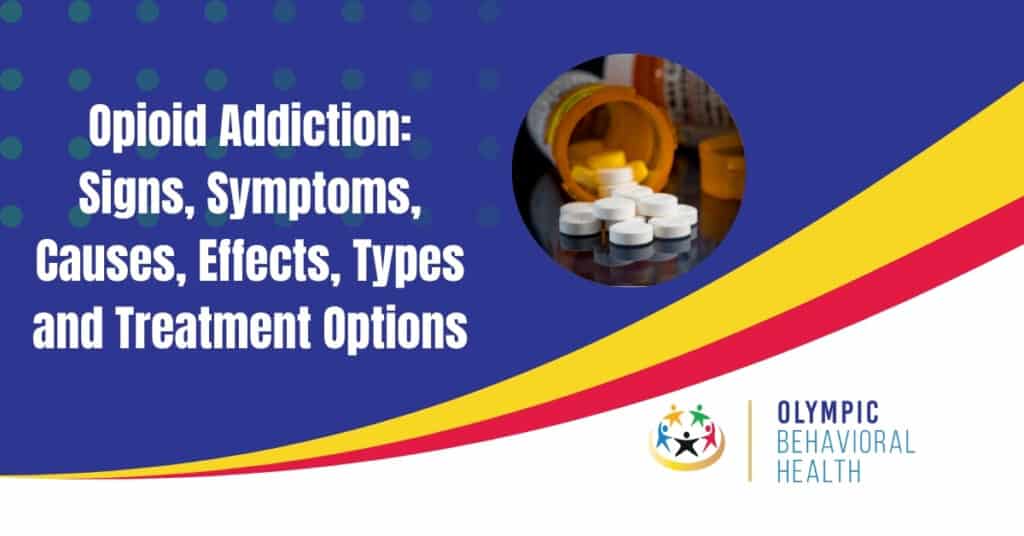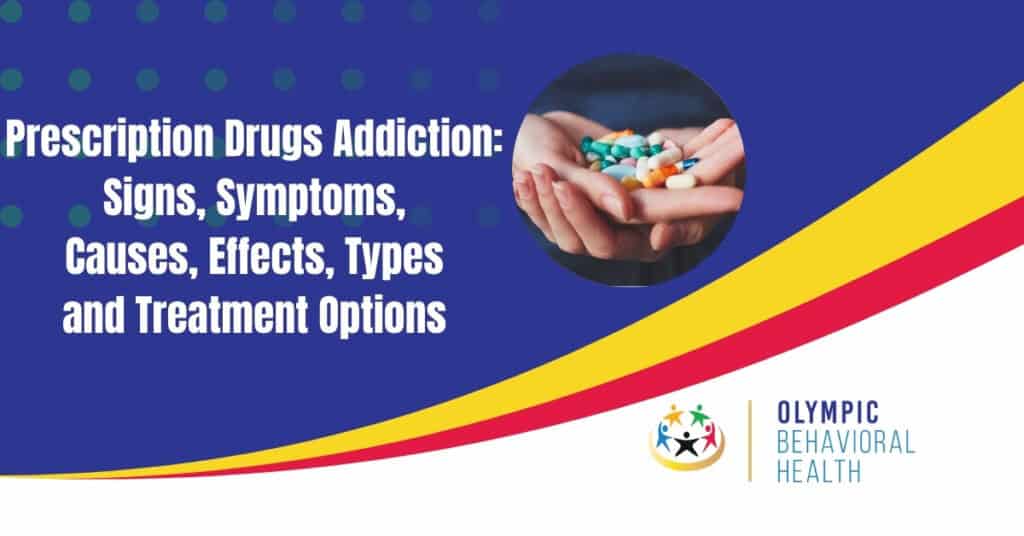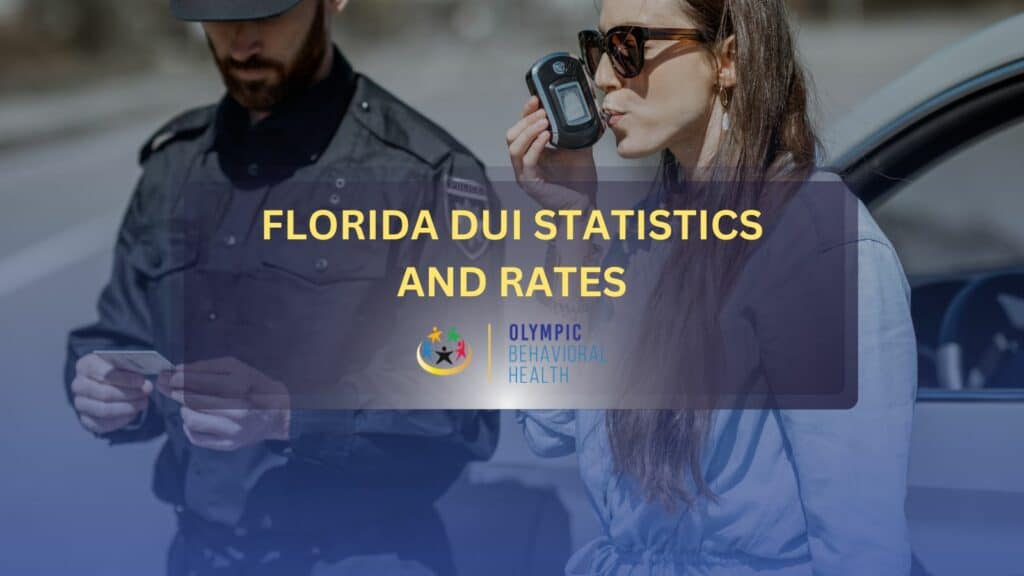Tens of millions of Americans battle mental illness each year. Data from the National Institute of Mental Health reports that only 50% of those suffering receive the treatment they need.
This post provides an overview of mental health in Florida, including youth and adult mental illness rates, suicide rates, substance use disorders, and access issues.
Key Takeaways:
- In the United States, Florida holds the top spot for the highest number of adults grappling with mental illness, with an estimated three million individuals reporting their struggle with mental health challenges.
- Out of the total adult population in the United States facing mental health issues, approximately 10.8% are without insurance, translating to around 5.5 million individuals. In Florida, the state ranks 40th nationwide, with roughly 13.60% of its residents dealing with mental illness lacking insurance coverage, totaling approximately 393,000 people.
- In 2016, 14.2% of adults residing in Florida reported having encountered a depressive disorder at some point in their lives. By 2019, this figure had risen to 17.7%, indicating a notable increase in the prevalence of depressive disorders among Florida’s adult population over the three-year period.
- From 2017 to 2019, Florida consistently reported an annual average percentage of past-year substance use disorder at 6.3%, encompassing roughly 1.1 million individuals. This aligns closely with the regional average rate of 6.4%, though it remains below the national average of 7.4%.
- In 2005, Florida recorded its lowest-ever suicide age-adjusted death rate (AADR) at 12.3 per 100,000 population. However, this rate has since increased, mirroring the trends observed at the national level.
- Since 2015, Florida has seen a marginal uptick in the rate of hospitalizations related to mental disorders, climbing from 1,022.9 per 100,000 population in 2015 to 1,026.6 per 100,000 in 2019.
- As of May 2022, 23.6% of adults in Florida who required therapy or counseling did not receive it within the past four weeks. The majority of these adults reported symptoms primarily associated with anxiety and/or depression.
General Florida Mental Health Insights
Here are general Florida mental health insights:
- The following table contains data from the Florida Health Association to illustrate Florida’s state of mental illness, access to care, and support services compared to other states.
| Mental illness rates & support services | Florida’s national rank |
| % of adults experiencing a mental illness | 1 |
| Prevalence of mental health and substance use issues | 7 |
| % of adults reporting a substance use disorder | 11 |
| % of adults with a mental illness who are uninsured | 40 |
| % of adults with a mental illness reporting unmet treatment needs | 32 |
| % of youth with severe major depressive episodes | 25 |
| % of adults reporting serious thoughts of suicide | 4 |
| Mental health workforce availability | 43 |
- Among states in the U.S., Florida’s per capita support for mental health issues ranks towards the bottom.
- For adults experiencing a mental illness, Florida ranks first in the United States, with an estimated three million adults reporting living with a mental illness.
- Florida ranks 33rd in the nation for rates of access to care and the prevalence of mental illness among youth.
- An estimated 2.5 million (or 14.81%) of adults in Florida report having a substance use disorder in the past year.
- Among all American adults with a mental illness, around 10.8% (or 5.5 million people) are uninsured. Florida ranks 40th in the country with around 13.60% (or 393,000) of residents with mental illnesses being uninsured.
- In the U.S., around 28.2% of adults with a mental illness do not receive adequate treatment. Florida ranks 32nd in the United States with 29.1% of adults with a mental illness reporting unmet treatment needs.
- Around 12.30% of Florida’s youth experience severe major depressive episodes, ranking the state at 25 in the U.S.
- In the U.S., around 56.4% of adults with any mental illness did not receive treatment in 2021. This percentage is higher for Florida, with around 61.4% of adults with any mental illness failing to receive treatment.
- Research has shown that lack of access to mental health care is positively correlated with the number of adults who are incarcerated in a given state. Florida’s incarceration rate is 720 people per 100,000 residents, which is higher than the national average rate of 660.
- Florida’s count of suicides is higher than the number of homicides in 60 out of 67 counties. From 2017 to 2019, over 90% of Florida experienced more suicides than homicides.
Self-Reports About Mental Health in Florida
Data from the Florida Health Charts 2020 shows:
- In 2019, 30% of Florida’s middle and high school students reported stopping their usual activities and experiencing feelings of sadness and hopelessness for two or more weeks. This percentage was 21.7% in 2016 and has increased each year since then.
- In 2019, 12.4% of middle and high school students reported purposefully trying to hurt themselves without wanting to die. This percentage was the lowest in 2017 (10.3%) and has increased each year since then.
- In 2016, 14.2% of adults in Florida reported ever experiencing a depressive disorder. The percentage increased to 17.7% in 2019.
- In 2019, 13.8% of Florida’s adults reported experiencing poor mental health for at least two weeks out of the past 30 days. This percentage was 11.4% in 2016.
Florida Youth Mental Health
The Florida Behavioral Health Barometer by the Substance Abuse and Mental Health Services Administration (SAMHSA) provides a comprehensive review of youth mental health in the state from 2016 to 2019.
Here are some key findings:
Depression
- The annual average percentage of Florida’s youth (aged 12 to 17) who underwent a major depressive episode saw an increase between 2004 to 2007 and 2016 to 2019.
- From 2016 to 2019, the annual average prevalence of youth experiencing major depressive episodes in the past year was 13.2%. This percentage is similar to the regional and national averages (13.1% and 14% respectively).
Young Adult Substance Use Disorder
- Among Florida’s young adults (aged 18 to 25), the annual average percentage of substance use disorders saw a decrease between 2015-2017 and 2017-2019
- Between 2017 and 2019, the annual average prevalence of past-year substance use disorder among Florida’s young adults was 12.5%. This percentage is lower than the national average of 14.7% but about the same as the regional average of 12.3%.
Thoughts of Suicide
- The annual percentage of Florida’s young adults (aged 18 to 25) who experienced persistent thoughts of suicide saw an increase between 2008 and 2010 and between 2017 and 2019.
- The annual average prevalence of serious thoughts of suicide among Florida’s young adults was 10.6% between 2017 and 2019. This percentage was similar to the regional and national averages (10.3% and 11.1% respectively).
Serious Mental Illness
- From 2008 to 2010 and from 2017 to 2019, there was an increase in the average percentage of Florida’s young adults (aged 18 to 25) who experienced a serious mental illness.
- Between 2017 and 2019, the prevalence of serious mental illness among Florida’s young adults was 7.3%. This percentage is close to the regional and national averages (6.9% and 7.9% respectively).
Mental Health Service Use
- Around 38.4% of Florida’s youth (aged 12 to 17) who underwent a major depressive episode received support for depression during 2016 and 2019. This percentage is lower than the regional and national averages for youth who received depression care.
Florida Adult Mental Health
The Florida Behavioral Health Barometer by SAMHSA also offers a comprehensive review of adult mental health in Florida during 2016-2019. Here are some key findings:
Serious Thoughts of Suicide
- The average percentage of Florida’s adults experiencing serious thoughts of suicide has not significantly changed from 2008 to 2010 and 2017 to 2019.
- The average prevalence of serious thoughts of suicide among adults in Florida (aged 18 or older) during 2017-2019 was 3.9%. This is lower than the national (4.5%) and regional averages (4.2%).
Serious Mental Illness
- The average percentage of Florida’s adults experiencing a serious mental illness has not changed significantly from 2008 to 2010 and 2017 to 2019.
- The annual average prevalence of Florida’s adults (aged 18 or older) experiencing past-year serious mental illness during 2017-2019 was 4.1%. This is lower than the national and regional averages (4.8% and 4.7% respectively).
Mental Health Service Use
- The annual average percentage of Florida’s adults with a mental illness who used mental health services in the past year has not changed significantly from 2008 to 2010 and 2017 to 2019.
- Between 2017 and 2019, the annual average percentage of adults in Florida with any mental illness who used a mental health service was 38.9%. This is lower than the regional and national averages (42.0% and 43.6% respectively).
Florida Substance Use Disorders
Here are some key numbers related to rates of substance use disorders in Florida:
- Between 2017 and 2019, Florida reported an annual average percentage of past-year substance use disorder of 6.3%, which represents around 1.1 million individuals. This is comparable to the regional average rate of 6.4% but falls below the national average of 7.4%.
- The drug overdose death rates in Florida have seen a notable increase in a ten-year period, rising from 15.4 per 100,000 in 2011 to 37.5 per 100,000 in 2021. The national rate of drug overdose deaths surged from 13.2 to 32.4 per 100,000 during the same period.
- In 2021, Florida recorded 5,940 opioid overdose deaths, constituting 76% of all drug overdose fatalities in the state. This is similar to national rates, with opioid overdoses accounting for 75% of all drug-related deaths in the US in 2021.
- From 2011 to 2021, Florida witnessed a significant rise in the age-adjusted death rate attributable to opioid overdose, increasing from 8.4 per 100,000 to 28.9 per 100,000. Similarly, across the United States, the age-adjusted death rate saw an increase from 7.3 per 100,000 to 24.7 per 100,000 over the same period.
| Substance use disorder | Annual average prevalence in Florida (2017 to 2019) | National average(2017 to 2019) | Regional average(2017 to 2019) |
| Marijuana | 1.30% | 1.60% | 1.30% |
| Heroin | 0.28% | 0.30% | 0.25% |
| Alcohol | 4.20% | 5.30% | 4.50% |
| Illicit drugs | 2.70% | 2.90% | 2.70% |
| Opioid | 0.90% | 0.70% | 0.80% |
| Overall substance use disorder | 6.30% | 7.40% | 6.40% |
Marijuana Use Disorder
- From 2002 to 2004 and from 2017 to 2019, the annual average percentage of marijuana use disorder among individuals aged 12 or older in Florida witnessed a decline.
- From 2017 to 2019, Florida reported an annual percentage of past-year marijuana use at 1.3%, similar to the regional average (1.3%) but falling below the national average (1.6%).
Heroin Use Disorder
- The annual percentage of heroin use among individuals aged 12 or above in Florida did not see a notable change between 2002–2004 and 2017–2019.
- Florida’s annual average prevalence of past-year heroin use between 2017 and 2019 was 0.28%, comparable to both the regional average (0.25%) and the national average (0.30%).
Alcohol Use Disorder
- From 2002 to 2004 and from 2017 to 2019, the annual percentage of alcohol use disorder saw a decrease among individuals aged 12 or above in Florida
- During 2017–2019, the annual prevalence of alcohol use disorder in Florida was 4.2%, similar to the regional average (4.5%) but lower than the national average (5.3%).
Illicit Drug Use Disorder
- Between 2015 and 2019, there was little change in the annual average percentage of illicit drug use disorder among individuals aged 12 or older in Florida.
- From 2017 to 2019, Florida’s annual average prevalence of past-year illicit drug use disorder was 2.7%, similar to both the regional average (2.7%) and the national average (2.9%).
Opioid Use Disorder
- The annual average percentage of opioid use disorder among individuals aged 12 or older in Florida did not significantly change between 2015–2017 and 2017–2019.
- Florida’s annual average prevalence of opioid use disorder during 2017–2019 was 0.9%, similar to both the regional average (0.8%) and the national average (0.7%).
Substance Use Treatment
- In March 2019, the count of individuals receiving treatment for substance use disorders in Florida was 57,335. This marked a decrease from 63,287 residents enrolled in 2015.
- Among those enrolled in treatment for substance use in Florida in March 2019, 51.0% sought help for drug-related issues only, 13.3% for alcohol-related issues only, and 35.6% for both drug and alcohol use disorders.
- In March 2019, the count of individuals in Florida receiving methadone when enlisted in opioid treatment programs was 18,079, showing an increase from 17,670 in 2015.
Florida Suicide Statistics
Statistics related to suicides in Florida include:
- In 2005, Florida witnessed its lowest-ever suicide age-adjusted death rate (AADR) at 12.3 per 100,000 population. This percentage has since risen, aligning with national patterns.
- The most recent AADR (2019) was 14.5, with a steep 18% increase from the 2005 rate of 12.3.
- In 2019, suicide ranked as the eighth leading cause of death in Florida, claiming 3,427 lives among residents.
Florida Hospitalization Rates for Mental Disorders
Since 2015, Florida has experienced a slight increase in the rate of hospitalizations for mental disorders. The number increased from 1,022.9 per 100,000 population in 2015 to 1,026.6 per 100,000 in 2019.
Here are some more statistics.
Hospitalization Rates by Race and Ethnicity
- Compared to White individuals, Black people experienced a higher rate of hospitalizations for mental illnesses in 2019. The rate was 1,283.9 per 100,000 for Black people and 949.4 per 100,000 for White people, with a ratio of 1.4:1.
- In 2019, Hispanics had a lower hospitalization rate for mental illnesses compared to non-Hispanics. The rate was 605.5 per 100,000 for Hispanics and 1,173.4 per 100,000 for non-Hispanics, with a rate ratio of 0.5:1.
Unmet Needs and Barriers to Care
Not every individual who requires mental health support is able to access it. Unmet needs refer to the circumstances faced by people with a recommended or perceived need for care, who are currently not receiving mental health treatment.
Certain groups (such as communities of color or uninsured individuals) are more likely to face barriers to care. These groups may be more vulnerable to mental health conditions and often fail to receive the care they need.
Data by the Kaiser Family Foundation highlights the percentages of children and adults in Florida who are not receiving adequate mental health support.
- In 2021, 11.1% of Florida’s residents (aged 3 to 17) received mental health care. This is similar to the national percentage, with 11.2% of children in the U.S. receiving mental health care in the same year.
- In May 2022, 23.6% of Florida’s adults with a need for therapy or counseling did not receive care in the past four weeks. These adults mainly experienced symptoms of anxiety and/or depression.
Out-Of-Pocket Spending in Health Plans According to Mental Status
- In 2021, adults with mental illnesses witnessed higher out-of-pocket expenditures compared to those without a mental health condition in Florida. The averages were $1,364 and $692, respectively.
- This trend is also seen nationally. In the United States, the average out-of-pocket spending for adults with mental illness was $1,282, compared to $645 for those without mental illness.
- In Florida, individuals with mental illness who are part of large employer health plans exhibit higher average total healthcare expenditures ($8831) in contrast to adults without mental illnesses ($4431).
- This trend persists across the United States—adults with mental illness who are part of large employer health plans spend an average of $8,823 compared to $4,198 for those without mental health conditions.
Frequently Asked Questions
Does Florida Have Good Mental Health Support?
Florida’s mental health support services and workforce availability ranks among the lowest in the United States. This is mainly because the state’s mental health care systems have experienced a severe lack of funding.
Does Florida Have State Mental Health Programs?
Most of Florida’s mental health facilities are not directly operated by the state. Florida’s community mental health system is fully privatized—it contracts with private programs to offer state-funded mental health services.
How Much Does Florida Spend on Mental Health?
Florida has recently announced a new state budget, allocating $2.5 billion for mental health and substance abuse programs.
Data Sources
- https://www.floridabha.org/wp-content/uploads/2019/09/2019_FBHA_MH_in_FL_brochure.pdf
- https://www.kff.org/statedata/mental-health-and-substance-use-state-fact-sheets/florida/
- https://www.nami.org/NAMI/media/NAMI-Media/StateFactSheets/FloridaStateFactSheet.pdf
- https://www.flhealthcharts.gov/charts/documents/FOCUSbehavioral2021.pdf
- https://www.samhsa.gov/data/sites/default/files/reports/rpt32826/Florida-BH-Barometer_Volume6.pdf
- https://cdn.ymaws.com/www.fadaa.org/resource/resmgr/files/Mental_Health/FADAA_Slipsheet1_Final.pdf
- https://mhanational.org/issues/2023/mental-health-america-adult-data

Share This Post



